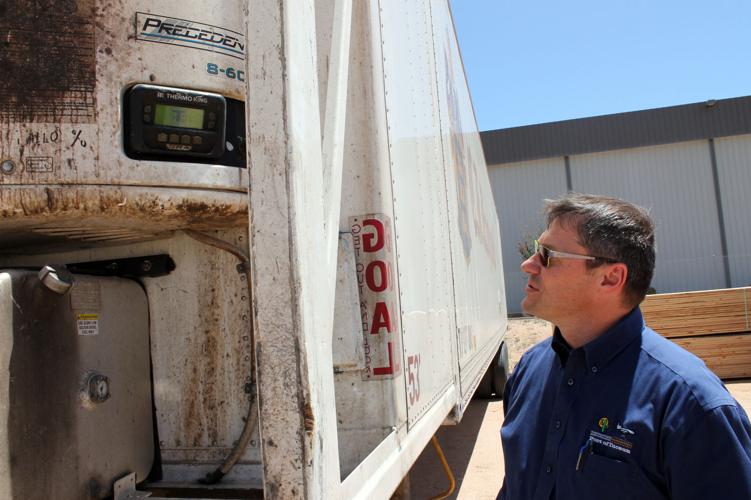The man who helped bring the ocean into Tucson, or at least ocean shipping containers, has left for San Diego.
Stefan Baumann, former director of business development for the Port of Tucson, started his new job at the Port of San Diego last week, leaving a mark after four years working at the local inland port.
“It’s a loss for the whole region,” said Juan Francisco Padrés, international trade specialist with the city of Tucson’s Economic Initiatives Office. “Even though he worked for the private sector, he was as much an economic developer as anybody else from the county, the city or the different regional partners.”
In 2013, the Port of Tucson was designated as a dry seaport, allowing ocean containers to travel via rail directly to and from the ports of Long Beach and Los Angeles. Before, imports were unloaded in California and trucked to Tucson, while exports were trucked from Southern Arizona to the coast.
The port, which was already an important part of the region’s economy, became even more of an asset, officials said.
“It makes us much more competitive on an international scale, really,” said John Moffatt, Pima County’s economic development strategic planning director. “By having direct access as an international shipping port for containers, both in and out, it allows our region to have lower freight costs, which makes companies more competitive in their industries.”
Coming to Tucson
Born in Switzerland in 1970, Baumann first came to the United States when he was 17 to visit an uncle in California.
“I was fascinated by the country, the people, the size of everything. Then it was my goal to move here, eventually,” he said.
Switzerland, landlocked in the center of Western Europe, is the headquarters of several world-class freight forwarding companies, Baumann said. The industry was a natural fit for his aspirations.
“Being a freight forwarder means you can work anywhere in the world, because once you know how trade and transportation works in one country, it pretty much applies anywhere,” he said.
Baumann worked his way up for more than a decade until he was able to strike out on his own in America.
“I spent 29 years in Switzerland and Switzerland, yeah, it’s pretty. It’s very clean. On the postcards it’s always sunny but that’s not the whole story. Most of the time it is overcast, something’s coming down — it’s either rain or ice or snow or fog,” he said. “Something is always messing up the sunshine and winters are really, really cold.”
So he came to Tucson, where the weather was great but his timing was off.
After almost two years of growth, the attacks of Sept. 11 ended his company.
“All the planes were grounded; my business was specialized in air freight,” Baumann said. “I was in my land of dreams without a job or health insurance or a work permit.”
He worked as a landscaper for a few months before finding a job at the University of Arizona as a program coordinator for the Consortium for North American Higher Education Collaboration.
He did that for a couple of years before moving to Canada to work for global transportation and logistics company Kuehne + Nagel. After a few years they asked him what he wanted to do and he chose to come back to Tucson, working for the company’s Phoenix branch and covering Southern Arizona and Sonora.
Then he discovered the Port of Tucson.
New challenges
It took about six interviews before Alan Levin, owner of the Port of Tucson, agreed to hire Baumann, who is sure it was less his credentials than his insistence that got him the job.
But he was sure that his years of experience and connections in the industry would help him bring ocean service to the port. Now he just needed to learn about rail.
Although he grew up in a continent where trains are everywhere, he never built rail into any of his supply chain designs. “It was a very steep learning curve. Everything to do with rail I had to learn from scratch,” he said. “I learned a lot at the Port of Tucson.”
He was up to the test then, he said, and hopes he will live up to expectations in California.
“San Diego has different challenges. They do have the water, so that’s good, that helps,” he laughed. “For them, I believe, growth will come with having a solid rail connection going east.”
And while he is leaving Tucson, that doesn’t mean he will stop caring about Southern Arizona.
“Hopefully, that is a real big hope that I have, if I can get that rail connection established from San Diego to the consumers in the U.S. Northeast, that connection can come through Tucson,” he said.
“That will open up a whole bunch more economic opportunities for trade, for importers and exporters, in the region.”





